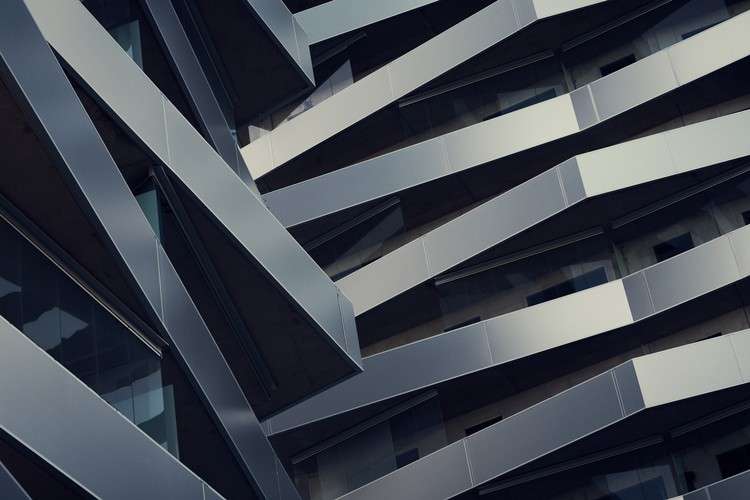Welcome to the world of FPV cameras! Have you ever wondered what makes those captivating drone shots possible? Look no further than an FPV camera. Whether you are a photography enthusiast or simply curious about drone technology, understanding the ins and outs of FPV cameras is essential. These incredible devices allow you to see the world from a whole new perspective, soaring above landscapes and capturing breathtaking aerial footage. In this article, we will delve into the fascinating world of FPV cameras, answering questions such as what they are, their role in drone technology, and even exploring just how high and far they can fly. So, buckle up and get ready to explore the limitless possibilities and unrivaled views that FPV cameras offer. Let's dive into the mesmerizing world of FPV cameras and experience the thrill of soaring through the skies like never before.

What is FPV or camera drone?
A FPV (First Person View) camera drone is a remarkable device that combines the thrill of flying with the immersive experience of virtual reality. With FPV technology, pilots can view real-time footage from the drone's camera, providing a first-person perspective as if they were sitting inside the cockpit. This perspective allows for precise control and navigation, making it an exciting tool for enthusiasts, photographers, and even professional filmmakers. FPV drones are equipped with high-quality cameras that capture stunning aerial footage, providing a unique and captivating view of the world from above. These drones are typically piloted using specialized goggles or monitors, which transmit the live video feed directly to the pilot. With the ability to maneuver through challenging environments, FPV drones offer an unparalleled sense of freedom and an opportunity to explore the world from a whole new perspective.
What is the best camera for FPV drone?
When it comes to choosing the best camera for an FPV drone, several factors need to be considered. The camera's image quality, latency, weight, and durability are all crucial aspects to look for. Many FPV drone enthusiasts opt for action cameras like the GoPro Hero series, as they offer excellent image quality, smooth footage, and a wide field of view. These cameras often have low latency, ensuring a nearly real-time video feed. Additionally, they are built with ruggedness in mind, able to withstand crashes and harsh environmental conditions. Another popular choice is the DJI FPV camera, known for its exceptional image stabilization and 4K video recording capabilities. It provides a crisp and smooth video feed, perfect for capturing breathtaking aerial shots. Ultimately, the best camera for an FPV drone depends on personal preferences and the specific requirements of the drone pilot, considering factors like budget and desired features.
What is an FPV camera?
An FPV camera is a specialized camera designed for First Person View flying. Unlike traditional cameras, FPV cameras are lightweight, compact, and built to transmit live video feeds in real-time. These cameras are specifically engineered to meet the demands of FPV drone pilots, providing a low-latency video signal, ensuring minimal delay between the drone's movements and what the pilot sees. The field of view and angle of the camera can be adjusted to suit individual preferences, allowing pilots to have precise control and a tailored view of their surroundings. FPV cameras usually have built-in video transmitters, which transmit the live feed to the pilot's goggles or monitor. This real-time video transmission is what enables the immersive experience of FPV flying, delivering a unique and thrilling perspective from the drone's viewpoint.
How high can FPV fly?
One of the exciting aspects of FPV flying is the ability to navigate the skies and reach impressive altitudes. The maximum height at which you can fly FPV drones depends on various factors, including the regulations in your country or region. In many places, drone pilots can fly their FPV drones up to a height of 400 feet (120 meters) above ground level, adhering to general aviation rules. However, it's crucial to abide by local aviation regulations and any airspace restrictions that may be in place. Additionally, pilots should always prioritize safety and maintain visual line of sight with their drone to ensure proper navigation and reduce the risk of collisions. While the drone's performance capabilities may allow for higher altitudes, responsible and legal FPV flying is important to ensure the safety of airspace and respect for privacy.
How far away can you fly FPV drone?
The range at which you can fly FPV drones largely depends on the transmission system used and the regulations governing drone flight in your area. The most common transmission system for FPV drones is radio control, which is limited by the strength and range of the radio signal. Typically, FPV drone pilots can fly up to several kilometers away from their location while maintaining a reliable connection. However, it is important to note that regulations often dictate that pilots must keep their drones within visual line of sight to ensure safety and compliance. It is crucial to familiarize yourself with the regulations and restrictions in your region and ensure you operate within those limits. Additionally, using technologies like long-range radio systems or video transmitters with extended ranges may require specialized permits or licenses in certain areas. Always prioritize safety and follow the local rules and guidelines when flying an FPV drone.
Further Inquiries about FPV Camera
What factors should I consider when choosing an FPV camera?
When selecting an FPV camera, several factors should be taken into account. One of the critical considerations is the camera's TVL (TV lines) rating, which determines the resolution and clarity of the video feed. Higher TVL ratings generally result in clearer and more detailed images. Additionally, the camera's sensor size, lens type, and field of view are essential factors to consider. Larger sensors typically provide better image quality, while different lenses offer varying perspectives. The field of view determines how much the camera can capture in the frame. Lastly, it is essential to consider the camera's compatibility with other components of your FPV system, such as video transmitters and goggles.
What is the role of image stabilization in FPV cameras?
Image stabilization plays a crucial role in FPV cameras by reducing vibrations and ensuring smooth and steady video footage. In FPV drones, vibrations from motors and propellers can translate into shaky footage, making the viewing experience less enjoyable. Image stabilization technology, such as electronic image stabilization (EIS) or mechanical gimbals, helps counteract these vibrations, resulting in clearer and more stable video recordings. Whether you are flying at high speeds or capturing fast-paced action, image stabilization is essential to produce professional-looking footage and prevent jitters or blurriness caused by drone movements.
What are the key differences between analog and digital FPV cameras?
Analog and digital FPV cameras are two main categories in the FPV market, each with its own characteristics and advantages. Analog cameras have long been the go-to choice for FPV flying due to their low latency, which ensures near real-time video transmission. Analog systems are generally less expensive than digital alternatives and have a wide range of compatible components. On the other hand, digital FPV cameras provide higher video quality and improved signal clarity. They often feature high-definition resolution and offer more advanced features like digital zoom and adjustable settings. However, digital systems may have higher latency and require a compatible digital video transmitter and receiver for optimal performance. The choice between analog and digital FPV cameras depends on individual preferences and the desired balance between video quality and latency.
Embarking on a journey into the world of FPV cameras has opened our eyes to the incredible possibilities and immersive experiences they offer. From understanding the essence of FPV drones and their magnificent cameras to exploring factors like altitude and range, we have delved into the exciting realm of FPV flying. The versatility of FPV cameras allows us to capture breathtaking aerial footage, offering a unique perspective on the world around us. Whether you are a photography enthusiast seeking to elevate your skills or simply eager to explore new horizons, FPV cameras are the gateway to a whole new level of adventure and creativity. So, unleash your imagination, take to the skies, and unlock a world of endless possibilities with FPV cameras and drones. The sky's the limit!



